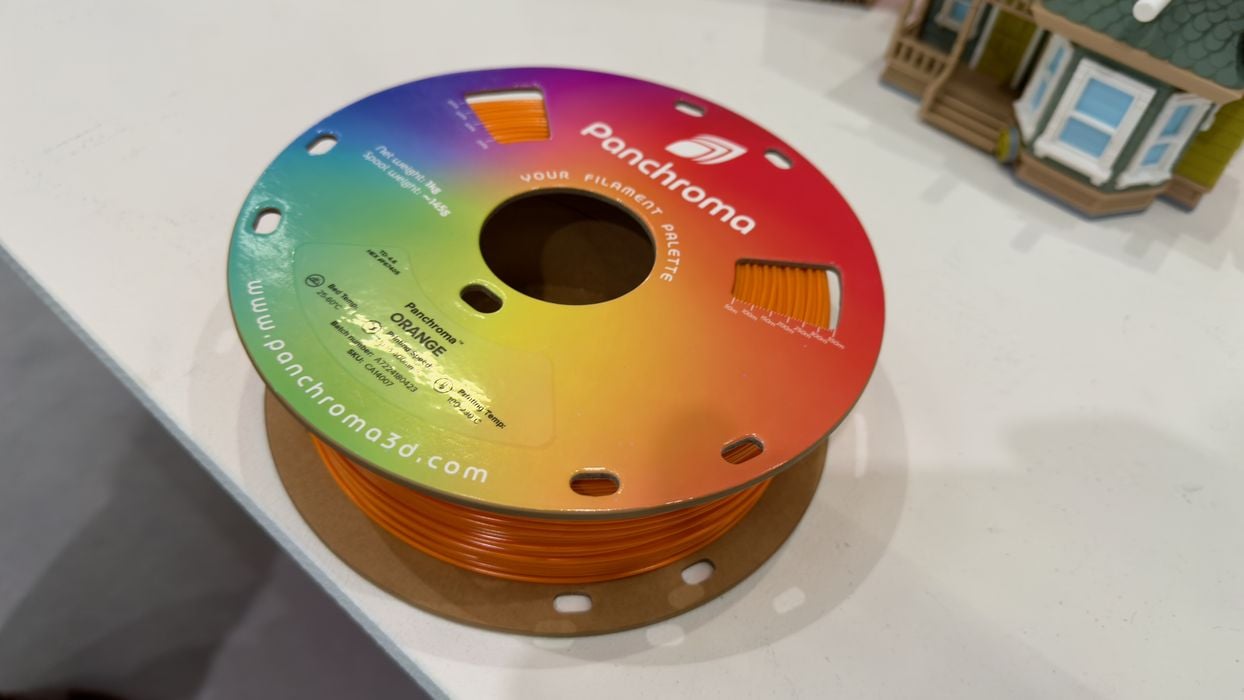
We had a fascinating visit with Polymaker, and learned of a new, inexpensive material they’re developing, among others.
The company is well-known for their vast product line, which seems to include a million or so color variants of PLA filament. I’m just kidding, but really they are probably over 200 different colors at this point.
They have so many that they have even developed an online tool to help buyers match products to the application by simulating the desired 3D model in a variety of colors.

One new material we saw was transparent PETG. This material appears to be extraordinarily clear, unlike most “transparent” materials that end up being cloudy.

I’m not sure what print parameters Polymaker used to achieve this, but the size of their display indicated it is straightforward with this new material.
Recently, they reorganized their growing product portfolio into Panchroma, the “fun” color line of PLA and similar products, and the Fiberon line of engineering filaments for mechanical projects.

The most interesting material they are working on is a new co-polyester, something they call “CoPE”. It’s intended for their Panchroma line.
What’s so interesting about this material? There are two factors.
First, it prints EXACTLY the same as regular PLA. It can literally use PLA print profiles and will result in the same quality parts. It does have a slightly higher thermal resistance, as it is a material somewhat related to PETG. Polymaker told us it has very good adhesion on standard print plates.

The second, and more important factor, is the cost to produce this material. Per 1kg spool, Polymaker believes they can produce units at US$5 less than standard PLA spools.
The result is that they should have a base 3D print 1kg spool product that sells for around US$15, rather than around US$20. One that is completely compatible with existing PLA setups.
That should put a dent into other providers that still market their 1kg spools in the US$30 range.
I asked about the possibility of PHA material, which has been gaining some attention recently. That’s because PHA is a material that can completely biodegrade in the natural environment. No other filaments on the market can do that, and PHA has even been marine certified.
However, Polymaker suggested that they had looked at PHA, but found the cost to be too high. They said the market tends to go for the low-cost products, ignoring most other factors. So no PHA from Polymaker.
But this also leads us back to CoPE: it’s an even lower-cost product, and by that same principle should be scooped up rapidly by customers.
Polymaker’s new slogan: “I can’t believe it’s not PLA!”
Via Polymaker
